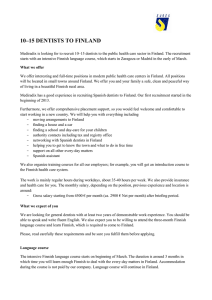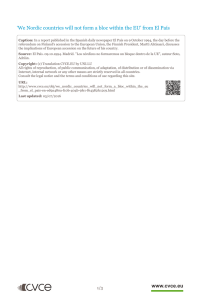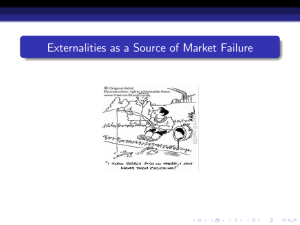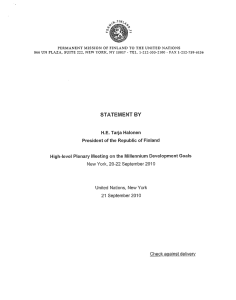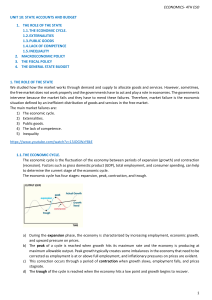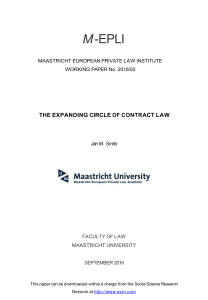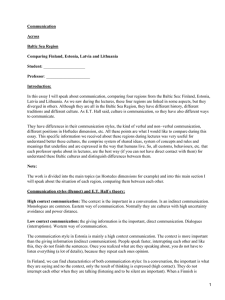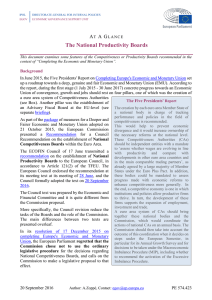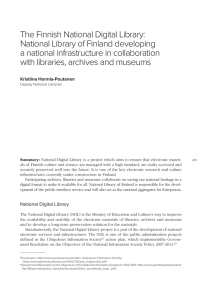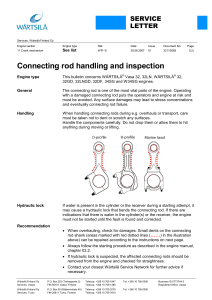Escuela pública
Anuncio
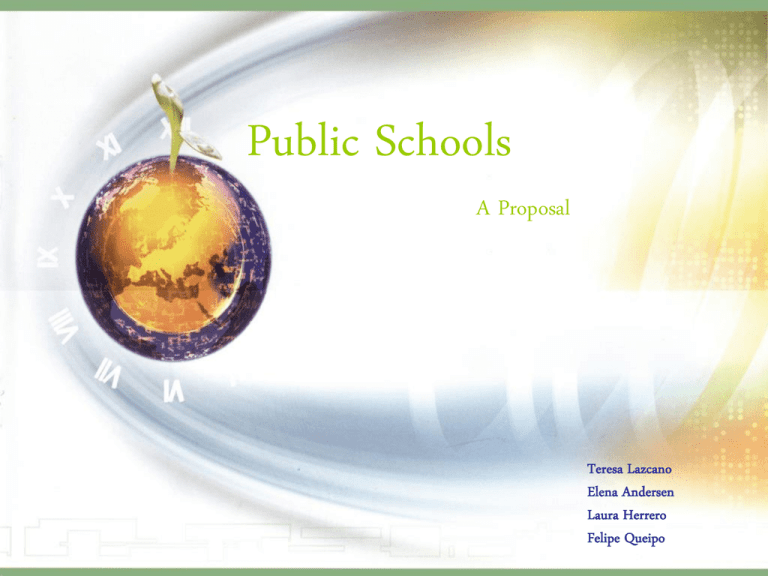
Public Schools A Proposal Teresa Lazcano Elena Andersen Laura Herrero Felipe Queipo Education The result of good upbringing (especially knowledge of correct social behavior) WorldReference.com What is a voucher system? DEFINITION: School vouchers are money given from tax revenues to parents to send their children to a school of their choice. Problems with the Voucher System Excudable Rival Costly Negative Externalities: - Inequality - Do to an increase in the supply and demand,not everybody can get education Example In California the big reason why children give up in schools is due to economic problems a 33.6%. -We have this problem with a voucher system. -With a public school this problem will be solve. A public school today, -Financed by the goverment around at 80%( Not complete) See graph below - Lack of resources -Low budget for teaching -Problems with social integration for inmigrants and handicaps - Short-term education instead of long-term (Weak skills and system) - Higher inequality These are the reasons why we believe goverment intervention is necessary A public School. A proposal: -A complete financing by the goverment. (100%) - Improvement of Infrastructures In Areas such as Telecommunications, Libraries, Health Care, Social Services, Psychology, Laboratories, etc. -Make things easy for Immigrant Integration, Sensorial, Physical and Mentally handicapped people, and social minorities. - Constant formation and promotion of teaching staff -Reform of Subjects and Update of Teaching System -Mandatory Attendance, with fines to parents and students. -Long Term Education -Social System - Creation of Educational Commission with a 75% of Majority for Reforms -Create a forum for the development of teachers, pupil`s and student`s skills - Integration of Parents in the Educational Process at the School,APAs, Activities and School Boards Goverment Intervention: A Public Provision • A public good means: -Non Rivalry -Non Excludability - Positive Externalities Non Rivalry • Just one supply, a public one. • Primary education is the same everywhere. • Cost of service is (close to) zero. • Benefits available to every memeber of the society. Non-excludability • Accessible for everyone and benefits whole society • Self-excluding from the system is not possible. • Assistance and integration • No zoning. Externalities (Economically) • Redistribution of income and well-being in society. • Expand your opportunities in job market • Lower unemployment rates • Economic growth. • Reduction of criminal rates. • Stimulates continuing professional education Externalities (Socially) • Benefits whole society, all part get involved • Motivation and school behavior. • The impact of family support. • Social acceptance. • Better human development, personal improvement. Education system and economic growth are related. The best education leads to a better competitive labor market that in a long term would increase the economy of a country. This would result in a global benefit and well-being for the society. World Economic Forum:the Global Competitiveness Report 2005-2006 1 Finland 16 New Zealand 2 USA 17 Korea, Rep. 3 Sweden 18 United Arabic Emirates 4 Denmark 19 Qatar 5 Taiwan 20 Estonia 6 Singapore 21 Austria 7 Iceland 22 Portugal 8 Switzerland 23 Chile 9 Norway 24 Malaysia 10 Australia 25 Luxemburg 11 Netherland 26 Ireland 12 Japan 27 Israel 13 United Kingdom 14 Canada 15 Germany Finland, the best example • According to the Ministry of Education Finland, this system is based on: - Pre-school teaching free of charge (meals, transportation,scholar material) - Finnish citizen is required to complete this education - Improve children's learning conditions - Safeguard a sufficient level of equal opportunities for education throughout the country -In Finland, 99.7 % of the age group complete compulsory schooling, which means that Finland has one of the lowest dropout rates in the world -The aim is to integrate special-needs education as far as possible into ordinary schools -Pupils learn two languages besides their mother tongue - In order to create closer cooperation between vocational education and training and the world of work, efforts are being made to increase the proportion of apprenticeship training to some 10 % of all entrants THE EFFECTS OF PUBLIC SCHOOLS • • • • • Standards and Efficiency Equity Economic Growth Human development General benefits Conclusion • Public Schools -Not Excludable -Non Rival -Positive Externality -Free of Charge -Efficient • Vouchers -Excudable -Rival -Negative Externality -Costly -Less efficient -Less Control WORKS CITED Ministry of education Finland.”Education” http://www.minedu.fi/minedu/index.html World Economic Forum. “Global Competitiveness Report 2005-2006” http://www2.weforum.org/site/homepublic.nsf/Co ntent/Global+Competitiveness+Programme/Glob al+Competitiveness+Report.html The information Network on education in Europe. “Key Data on Education in Europe 2005” http://www.eurydice.org/Documents/cc/2005/en/ FrameSet.htm

